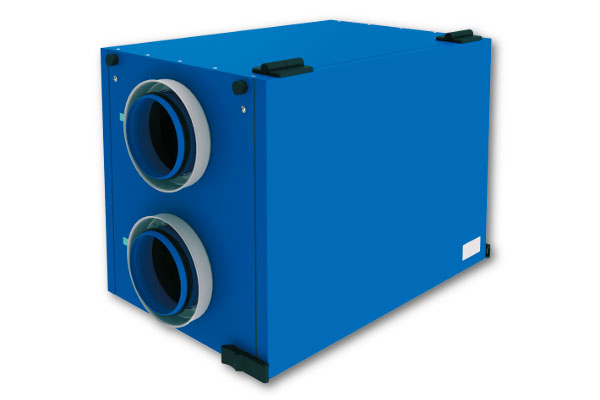
Deciphering HRVs: A Guide to Heat Recovery Ventilators
What Does an HRV Do?
A Heat Recovery Ventilator (HRV) is a critical component of modern HVAC systems, designed to strike a delicate balance between indoor air quality and energy efficiency. HRVs play a pivotal role in ensuring that your home’s air is fresh and comfortable. Here’s how they work:
- Air Exchange: HRVs perform a continuous exchange of indoor air with fresh outdoor air. This not only replenishes oxygen levels but also helps remove indoor pollutants like carbon dioxide, odors, and volatile organic compounds (VOCs).
- Energy Recovery: In addition to providing fresh air, HRVs are engineered to recover heat from the outgoing indoor air during the winter. They transfer this heat to the incoming outdoor air, reducing the need for additional heating and, thus, energy costs. This process works in reverse during the summer to keep your home cool and comfortable.
What Is an HRV in a House?
In a residential setting, an HRV is a device integrated into the HVAC system. It consists of two separate air streams—one bringing fresh outdoor air in and the other exhausting stale indoor air out. These air streams pass through a heat exchanger where heat (or coolness in the summer) and humidity are transferred from one air stream to the other. This ensures a constant supply of fresh, pre-conditioned air while minimizing energy loss.
Should You Leave HRV On All the Time?
The optimal operation of your HRV depends on several factors, including your climate, indoor air quality objectives, and personal preferences. While some homeowners prefer continuous operation, others may opt for a more controlled approach.
Continuous Operation:
- Running your HRV continuously provides a steady supply of fresh air, enhancing indoor air quality.
- It helps maintain consistent indoor temperature and humidity levels.
- Continuous operation is particularly beneficial in tightly sealed homes to prevent the buildup of indoor pollutants.
Intermittent Operation:
- In moderate climates, you may choose to run the HRV only when outdoor conditions are favorable.
- Intermittent operation can be programmed to align with your daily routine and occupancy patterns.
- Consult with HVAC professionals to determine the best operational strategy for your specific needs.
Does My House Need an HRV System?
The need for an HRV system depends on various factors, such as your location, climate, home insulation, and ventilation requirements. However, here are some scenarios where an HRV is highly recommended:
- Cold Climates: In regions with harsh winters, an HRV is essential to recover heat and maintain indoor comfort.
- Tightly Sealed Homes: Modern, well-insulated homes can trap indoor pollutants, making ventilation crucial.
- Energy Efficiency: If you’re committed to energy efficiency and reducing heating and cooling costs, an HRV is a wise choice.
- Improved Air Quality: HRVs significantly enhance indoor air quality, making them an ideal choice for those with respiratory issues or allergies.
Recommended HRV Products
If you’re considering installing an HRV system, explore these top-notch products:
- Ductless Options – Vento Series
- Freshbox Series
- Residential Units – HRV-D
In conclusion, an HRV is a valuable addition to your home’s HVAC system, ensuring a constant supply of fresh air, energy efficiency, and improved indoor air quality. To determine whether your house needs an HRV system and to explore specific options, consult with HVAC professionals who can provide tailored solutions for your unique requirements.
Benefits of an HRV
- Taking the strain off of your home HVAC systems, and provide cost savings in cool climates.
- Incoming fresh air is not contaminated by exhaust air.
- Remove stuffy air in rooms with limited air flow and provide fresh warm air to these premises.
- Transfer waste exhaust heat into the incoming fresh air.
- Save up to 5 times more energy than it costs to run.
- Reduce greenhouse gas emissions by recycling energy.
